New York Times (November 27, 2005)
The Myth of the Native Babe: Hollywood's Pocahontas
By STEVE CHAGOLLAN
NATIVE AMERICANS have taken a beating in American cinema dating back to silent pictures, generally depicted as marauding terrorists at worst or noble savages at best. Against this backdrop of violence, warriors like Geronimo, Sitting Bull and Crazy Horse have played recurring roles, but pacifists like Pocahontas have proven more elusive.
Despite her status as a key figure in our nation's birth, the Powhatan princess -- a mere 10 to 12 years old when she first befriended the English explorer Capt. John Smith and the Jamestown settlers in 1607 -- has been mostly relegated to obscure B movies that relied more on legend than fact. The 1953 United Artists clunker Captain John Smith and Pocahontas veered so far off the tracks of history that it married the lead characters, serving up lines like "It may well be that on the shoulders of that Indian girl will rest the whole future of Virginia."
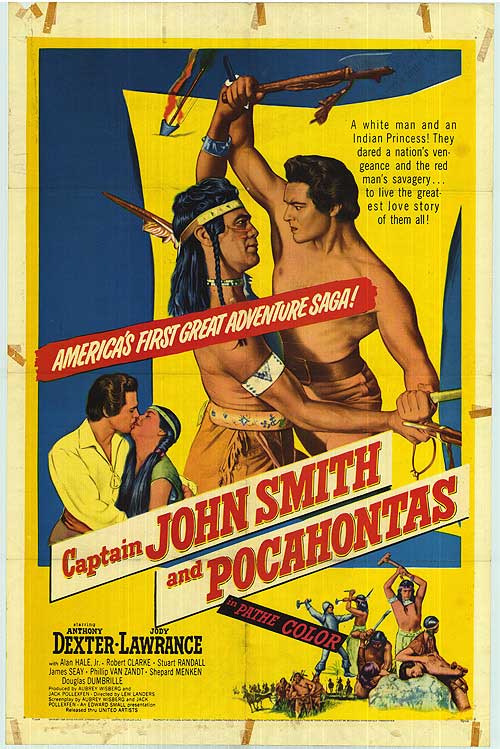
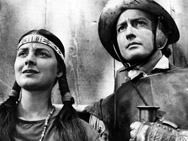
Four decades later, the animated Disney box office hit Pocahontas depicted its heroine as an exquisitely beautiful, fully formed woman with flowing black hair, almond-shaped eyes and just the hint of a nose, and Smith as a dashing adventurer with square jaw, Herculean build and a blond surfer mane. It was Romeo and Juliet without the tragic ending.
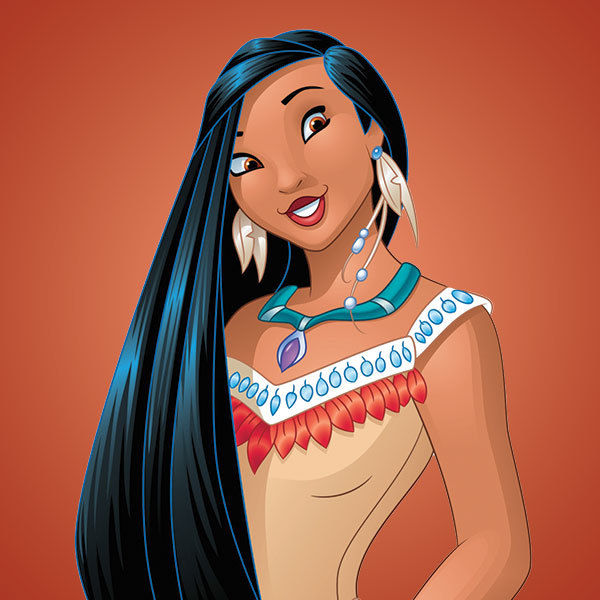
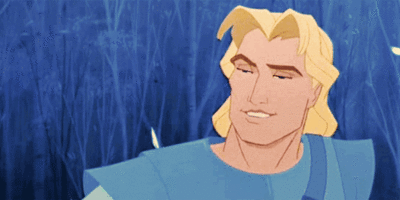
But come Christmas Day, New Line Cinema and the writer-director Terrence Malick will offer in The New World what promises to be a far more complex take on the Jamestown saga and its clash of cultures between English colonists and the Powhatan tribes. The project, as is usual with Mr. Malick's work, has been shrouded in secrecy, though publicity materials have stressed the verisimilitude of a film shot close to where the actual events took place along Virginia's Chickahominy and James Rivers, before wrapping in London.
Although the period, settings and costumes have been recreated with the utmost authenticity in mind, it could be said that the filmmakers are again avoiding the dry brush of historical accuracy in painting the relationship between Pocahontas, portrayed here by Q'orianka Kilcher (who was 14 at the time of filming) and Smith, played by Colin Farrell.

"First and foremost we've created a love story," the film's producer, Sarah Green, said. "We're definitely not doing a historical piece. We try to set it properly; we try to give that background and that feeling, but we focus on the love story."
Hollywood loves a romance, and its problem with Pocahontas, historically speaking, is that she and Smith were very likely never more than cordial allies. Five leading scholars in the field of Native American studies interviewed for this article all unequivocally stated that no evidence points to an intimate link between the two, even based on Smith's own fancifully embellished accounts. (If there was, Smith was either being uncharacteristically modest, or his initial writings sent to England ahead of him were edited for propriety's sake.)
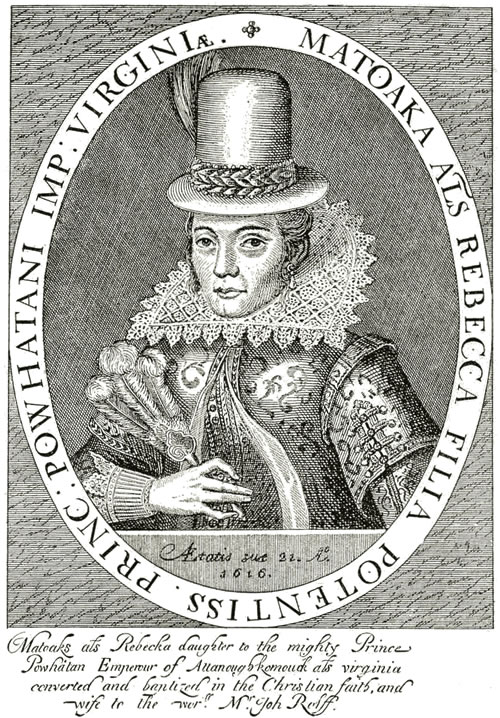
"Pocahontas was not romantically involved with John Smith," said John Mohawk, the director of indigenous studies at the State University of New York at Buffalo. "John Smith was one of those guys who used to go around writing stories that made himself look glamorous. That was a tradition in those days. He spun this fancy tale about how this beautiful maiden saved his life, but it was all bunkum."
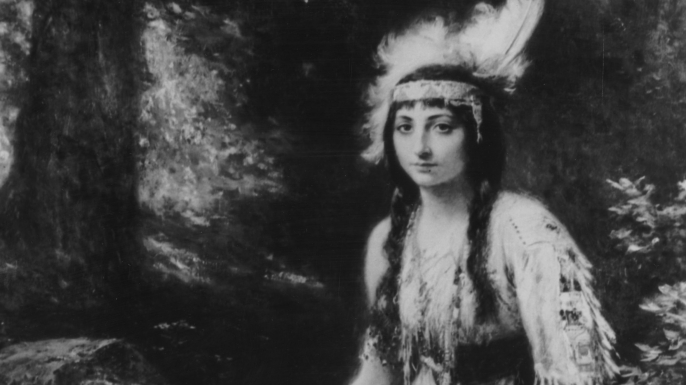
In real life, Pocahontas converted to Christianity, married the original tobacco magnate John Rolfe, gave birth to their son and removed to London, where she was paraded at court as Lady Rebecca -- living proof to potential investors that the Virginia Company was not only a sound enterprise but a royal partnership, given Pocahontas's high-born status as the daughter of the Powhatans' supreme chief. Barely in her 20's, she died in England, leaving behind the widowed Rolfe, played in the new film by Christian Bale.
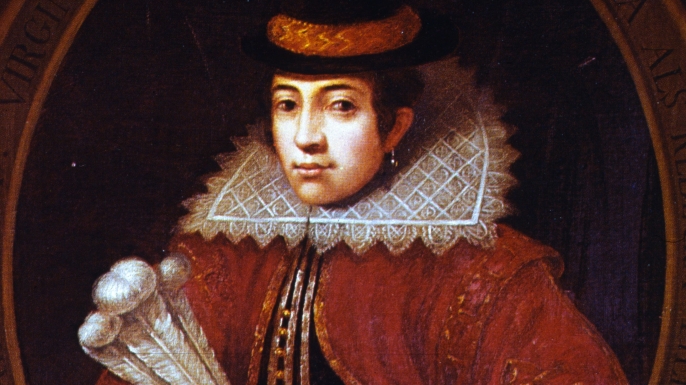
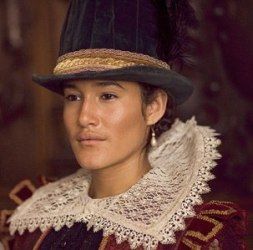
Pocahontas has since had a mixed legacy, having been portrayed as everything from the mother of a nation to betrayer of her people. It is a fate shared by other legendary Indian women, such as Doña Marina, who acted as guide, translator and lover to Cortes during his conquest of Mexico in the 1500's, and Sacagawea, who accompanied Lewis and Clark on their expedition to the Pacific coast in 1805. (Octavio Paz's "The Sons of La Malinche," a theory of Mexicanidad.)
"You have to view them in the context of the time," said Jon Parmenter, assistant professor of history at Cornell University, who contends that today many Native Americans are too quick to denigrate these women as collaborators.
"To the extent that they understood their roles, Doña Marina, Sacagawea and Pocahontas believed they were working very much to mediate and mitigate the impact of colonialism, but they were in tough spots," he said.
The persistent notion of a love affair between Pocahontas and Smith owes much to Smith's own pose as a man of irresistible appeal. "Smith wrote often later in life about beautiful young girls in all parts of the world throwing themselves at him, always putting his interests ahead of their own," said Camilla Townsend, a professor of history at Colgate University and author of Pocahontas and the Powhatan Dilemma.
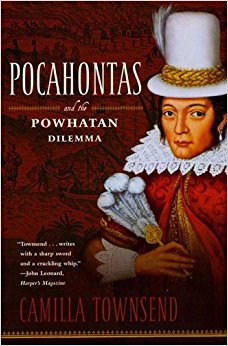
"I refer to it as the 'pornographic narrative,' and I don't mean that in a purely sexual sense," Professor Townsend said. "The colonists in general wanted to believe that the Indians wanted us here, that they admired our way of life, that they needed us."
Whatever their relationship, it's accepted fact that Pocahontas and Smith took pains to learn each other's language. For Smith it was the logical first step in co-existence at a time when the colonists could not fend for themselves and needed help from the natives.
"Smith was a results-oriented person," said Professor Parmenter. "Means and methods didn't really trouble him too much." The Englishman was renowned, the professor said, "for essentially gathering up a posse and marching into smaller Indian towns and demanding food at gunpoint."
During one of these missions, Smith was captured and seemingly served up for execution. At the moment of truth, according to his memoirs (written, curiously enough, in the third person), Pocahontas intervened and took his "head in her armes and laid her owne upon his to save him from death." A major reason skeptics question Smith's account is that he failed to mention the episode in his initial recording of the expedition. The more fanciful version of his rescue was not published until 1624, seven years after Pocahontas's death.
ACCORDING to Crandall Shifflett, a University of Virginia history professor and director of the Virginia Center for Digital History, "Smith thought he was going to be killed and that Pocahontas had saved him, but what actually happened was that Powhatan was trying to bring him into his tributary system" as a chief, or "werowance."
Rayna Green, a curator at the Smithsonian Institute, said the elaborate hazing ritual was purely pragmatic. "Pocahontas, as the child of her father, would have had more of an authoritative role in converting someone from his original existence as an Englishman," said Ms. Green. "That conversion would have been necessary for him to become a legitimate functionary in the community. In other words, he can't go around whacking his brother and sisters."
Pocahontas was eventually abducted by the English when renewed hostilities broke out, during which time she met Rolfe, married him and converted. If these actions seem unlikely for a prisoner, they were still sanctioned by her father, who resigned himself to the realization that the English weren't going away.
Her eventual trip to England with Rolfe and their newborn
son proved a fund-raising boon to the colony, with Pocahontas serving as a kind
of poster girl for the Virginia Company.
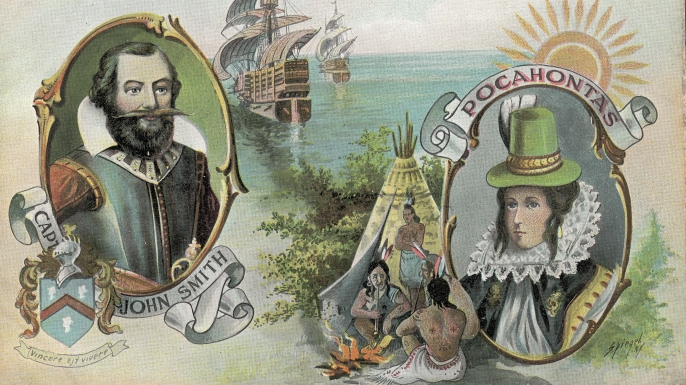
To subsequent generations of Americans, she was viewed as "the good Indian," an ambassador for peace and harmony between the two worlds, though the relative calm at Jamestown ended not long after her death.
"Mythologies aren't created for the purpose of telling history, they're created for the purpose of trying to devise some form of identity for people," said Professor Mohawk. And popular films, he pointed out, have an inherent problem with the past: "Americans like their movies with a beginning, a middle and end. By the time Pocahontas died, we were a long ways from the end."